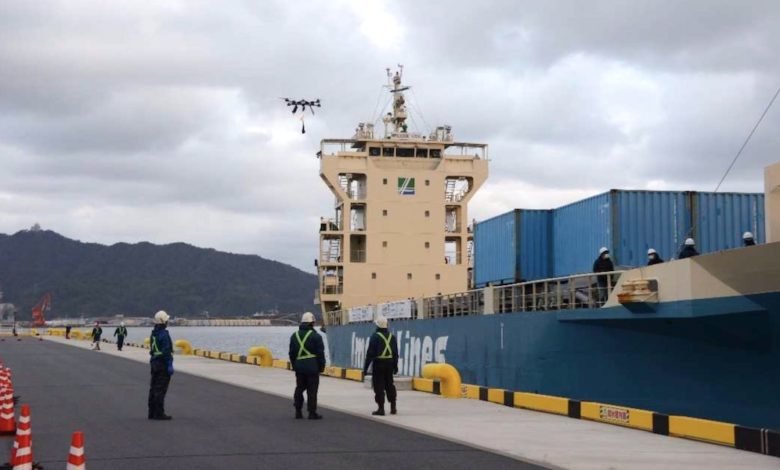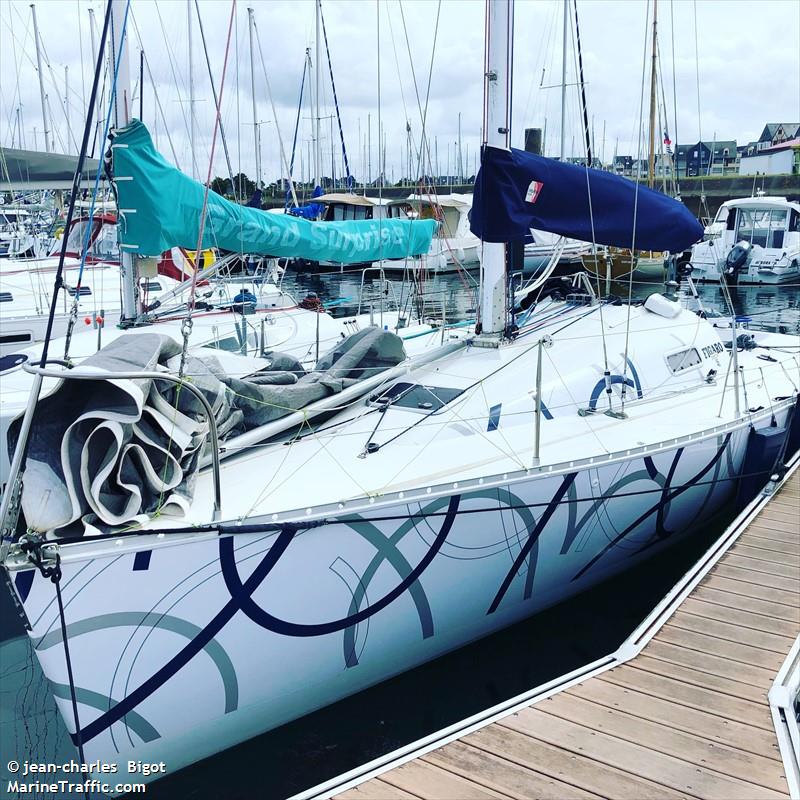Japan celebrates landmark unmanned boxship voyage

A containership has completed an unmanned voyage between two ports in Japan as the nation continues to lead world shipping towards a more autonomous feature.
The 194 teu Mikage moored automatically today using a drone (pictured) at Sakai port, having set off from Tsuruga port a couple of hundred miles away yesterday. The ship is owned by Imoto Lines, Japan’s largest domestic feeder operator, in which Mitsui OSK Lines (MOL) is a key shareholder.
The coastal ship was taking part in the Nippon Foundation-led unmanned ship project MEGURI2040. Other partners in the project include Mitsui E&S Shipbuilding and Furuno.
Similar tests were also carried out on an MOL-controlled ferry.
Japan’s major shipping lines are all investing considerable resources in developing autonomous technology.
Last August Splash reported that MOL will install remotely controlled robots on some of its ships.
“Issues facing the shipping business include not only prevention of marine accidents and ensuring safe operation, but also improving transport quality to more effectively meet customer needs. Therefore, it is becoming more and more important for the industry to take a mid- and long-term viewpoint in finding solutions by adopting new technologies such as autonomous navigation and remote control,” MOL stated in a release at the time.

 moored automatically today using a drone (pictured) at Sakai port, having set off from Tsuruga port a couple of hundred miles away yesterday. The ship is owned by Imoto Lines, Japan’s largest domestic feeder operator, in which Mitsui OSK Lines (MOL) is a key shareholder.
moored automatically today using a drone (pictured) at Sakai port, having set off from Tsuruga port a couple of hundred miles away yesterday. The ship is owned by Imoto Lines, Japan’s largest domestic feeder operator, in which Mitsui OSK Lines (MOL) is a key shareholder.
“ … it is becoming more and more important for the industry to take a mid- and long-term viewpoint in finding solutions by adopting new technologies such as autonomous navigation and remote control”
If that is the solution, what is the problem? If one thinks the infamous ‘human error’ issue will be resolved by removing humans, when will we learn that a ‘mechanical breakdown’ will be solved by removing the machinery???
That’s a ridiculous statement, yes?
At the end of this effort, there will still be humans monitoring robot ships, inputing data to send them off on their voyages. These ships will then be greeted by human technicians that will be scrambling to use what little time they have in port to perform maintenance and repairs.
Thus no humans will actually be removed after all.
What money is saved? Are these ships actually safer? If not safer and construction and operation are as expensive or more, what’s the point of it all?
Correct Ed. My thoughts exactly. Some of the Japanese & European operators are looking into this for very specific ship types and routes, with some success (This story and the Yara operation spring to mind). If you throw enough time, money and effort at a project a solution will be found. Is it cost effective? Will the outcome be truthfully reported? Only time will tell.
But my feeling on this is that it’s being driven by the people who stand to make money from the outcome. I have yet to read a comprehensive statement from a shipowner that they want to have vessels with no crew on board. I’m not adverse in any way to progress and technology advancement, but there are some cases where a simple sailor is the only option.